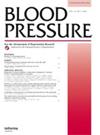脑卒中间研究:到目前为止,高血压是脑卒中最重要的可改变的危险因素
IF 2.3
4区 医学
Q2 PERIPHERAL VASCULAR DISEASE
引用次数: 12
摘要
2015年全球疾病负担研究[1]报告称,在疾病、损伤和风险因素中,导致全球残疾调整寿命(DALY)的五个最大因素是收缩压高(2.12亿)、吸烟(1.49亿)、空腹血糖高(1.43亿)、体重指数高(1.2亿)和儿童营养不良(1.13亿)。我们[2]认为,全球疾病负担研究是向政府、医疗保健提供者和广大民众通报风险因素真实问题的最有用的全球努力,在过去的25年里,高血压一直是全球疾病和死亡的主要危险因素。同样,脑卒中间研究人员最近量化了世界不同地区、关键人群和主要脑卒中亚型中急性脑卒中可改变风险因素的重要性[3]。从2007年初到2015年年中,32个国家的10388名缺血性中风患者和3059名脑出血患者与13472名对照者进行了比较。在世界各主要地区,10个潜在的可改变风险因素与约90%的人群可归因的中风风险共同相关。这些关联在不同种族、性别和所有年龄组中都是一致的。人群卒中风险的估计是基于逻辑模型的;使用这种方法[4],个体风险因素的人群可归因风险的增加通常超过100%,尽管这些风险因素的组合的总体可归因风险小于100%。既往高血压病史或血压140/90mm Hg或更高(比值比2.98,99%置信区间2.72–3.28,归因风险47.9%,99%可信区间45.1–50.6)是迄今为止最重要的可改变风险因素。其他可归因于人群的可改变风险因素,按重要性降序排列,包括体力活动(35.8%)、载脂蛋白B/A1比率(26.8%)、饮食(23.2%)、腰臀比(18.6%)、心理社会因素(17.4%)、当前吸烟(12.4%)、心脏原因(9.1%)、饮酒(5.8%),和糖尿病(3.9%)。中风间研究人员发现,尽管这十个风险因素对中风风险的共同贡献在所有人群中都是一致的,但有证据表明,个体风险因素的重要性存在地区和种族差异,这表明全世界预防中风的一般方法可能是相似的。由于70-80%的中风可以通过降压药物治疗来预防,例如30/15mm Hg[5],例如在氯沙坦终点干预(LIFE)降压研究中,从174/98的平均基线血压降低到144/81mmHg[6],脑卒中研究人员再次提醒我们需要仔细评估和治疗高血压。我们不确定最佳血压治疗目标,但我们确信高血压治疗对预防中风是有效的,而且在低目标水平下似乎没有J曲线,如缬沙坦抗高血压长期使用评估(VALUE)试验[7,8]。因此,我们认为,130/80mm Hg或更低的目标血压是有益的,尤其是对中风高危人群。本文章由计算机程序翻译,如有差异,请以英文原文为准。
The INTERSTROKE Study: hypertension is by far the most important modifiable risk factor for stroke
The Global Burden of Disease Study 2015 [1] reported that the five largest contributors to global disabilityadjusted life-years (DALYs) among diseases, injuries and risk factors were high systolic blood pressure (212 million), smoking (149 million), high fasting plasma glucose (143 million), high body mass index (120 million million) and childhood undernutrition (113 million). We [2] believe that the Global Burden of Disease Study is both the most useful global effort to inform governments, health care providers and the population at large of the real issues of risk factors, diseases and injuries in the world and the most important global study to reveal that hypertension has remained the leading risk factor for disease and death worldwide for the past quarter century. Similarly, the INTERSTROKE investigators recently quantified the importance of modifiable risk factors for acute stroke in different regions of the world, in key populations, and in major stroke subtypes [3]. From early 2007 and through mid-2015, as many as 10,388 patients with ischemic stroke and 3059 patients with intracerebral haemorrhage were compared with 13,472 control persons in 32 countries. Ten potentially modifiable risk factors were collectively associated with approximately 90% of the population attributable risks of stroke in each major region of the world. These associations were consistent in different ethnic groups, both genders and all age groups. Estimations of population attributable risks of stroke were based on logistic models; using this method [4] addition of population attributable risks for individual risk factors usually exceeds 100% although the overall attributable risk for the composite of these risk factors is less than 100%. Previous history of hypertension or blood pressure of 140/90mm Hg or higher (Odds ratio 2.98, 99% CI 2.72–3.28, attributable risk 47.9%, 99% CI 45.1–50.6) was by far the most important of the modifiable risk factors. Other population attributable modifiable risk factors, in descending order of importance, included physical activity (35.8%), apolipoprotein B/A1 ratio (26.8%), diet (23.2%), waist-to-hip ratio (18.6%), psychosocial factors (17.4%), current smoking (12.4%), cardiac causes (9.1%), alcohol consumption (5.8%), and diabetes mellitus (3.9%). The INTERSTROKE investigators found evidence of regional and ethnic variations in magnitude of importance of individual risk factors, though the collective contribution of these ten risk factors to stroke risk was consistent in all populations, suggesting that general approaches to prevention of stroke can be similar worldwide. Since 70–80% of strokes can be prevented by reducing blood pressure with antihypertensive drug treatment, e.g. 30/15mm Hg [5], as an example reduction from average baseline blood pressure of 174/98 to achieved average 144/81mmHg in the Losartan Intervention For Endpoint (LIFE) reduction in hypertension study [6], the INTERSTROKE investigators have reminded us once again about the need for careful assessment and treatment of hypertension. We are not sure of the optimal blood pressure treatment target, but we are sure that treatment of hypertension is effective in preventing stroke, and there seems to be no J-curve at low target levels, as in the Valsartan Antihypertensive Long-term Use Evaluation (VALUE) trial [7,8]. It is our opinion then that a target blood pressure of 130/80mm Hg or lower is beneficial, particularly in people at high risk of stroke.
求助全文
通过发布文献求助,成功后即可免费获取论文全文。
去求助
来源期刊

Blood Pressure
医学-外周血管病
CiteScore
3.00
自引率
5.60%
发文量
41
审稿时长
6-12 weeks
期刊介绍:
For outstanding coverage of the latest advances in hypertension research, turn to Blood Pressure, a primary source for authoritative and timely information on all aspects of hypertension research and management.
Features include:
• Physiology and pathophysiology of blood pressure regulation
• Primary and secondary hypertension
• Cerebrovascular and cardiovascular complications of hypertension
• Detection, treatment and follow-up of hypertension
• Non pharmacological and pharmacological management
• Large outcome trials in hypertension.
 求助内容:
求助内容: 应助结果提醒方式:
应助结果提醒方式:


